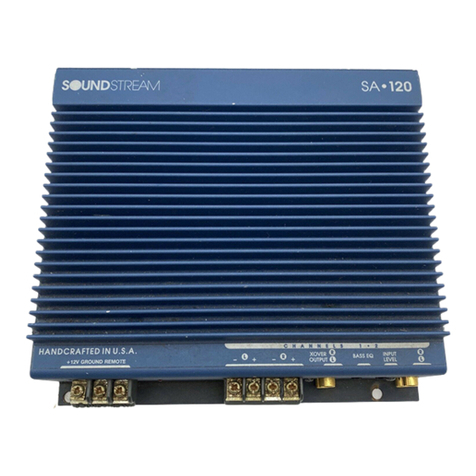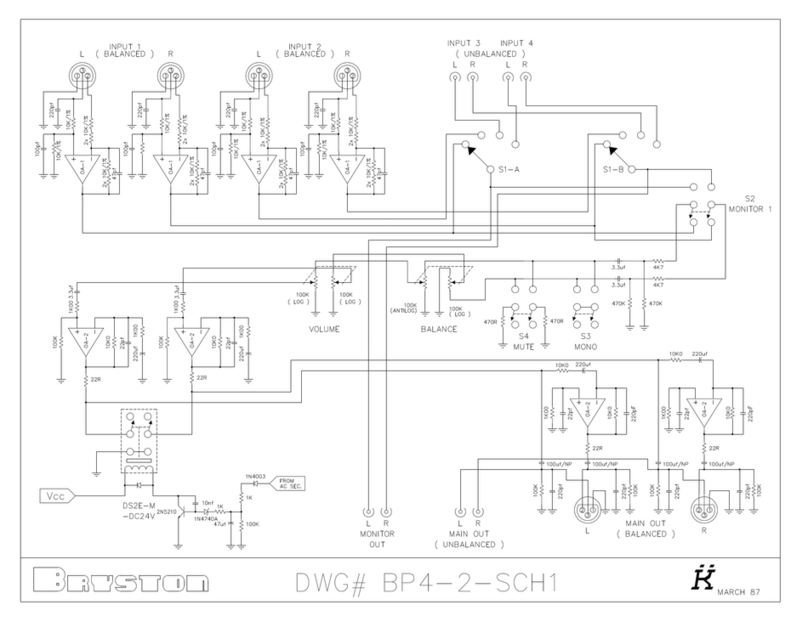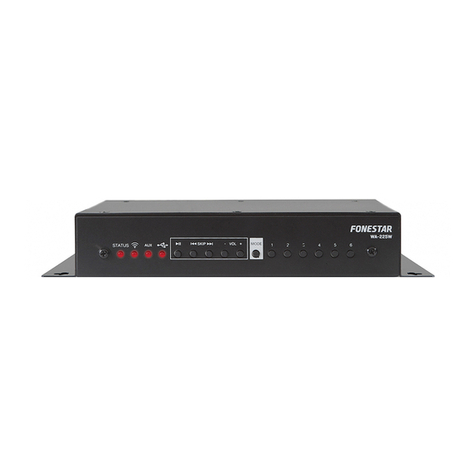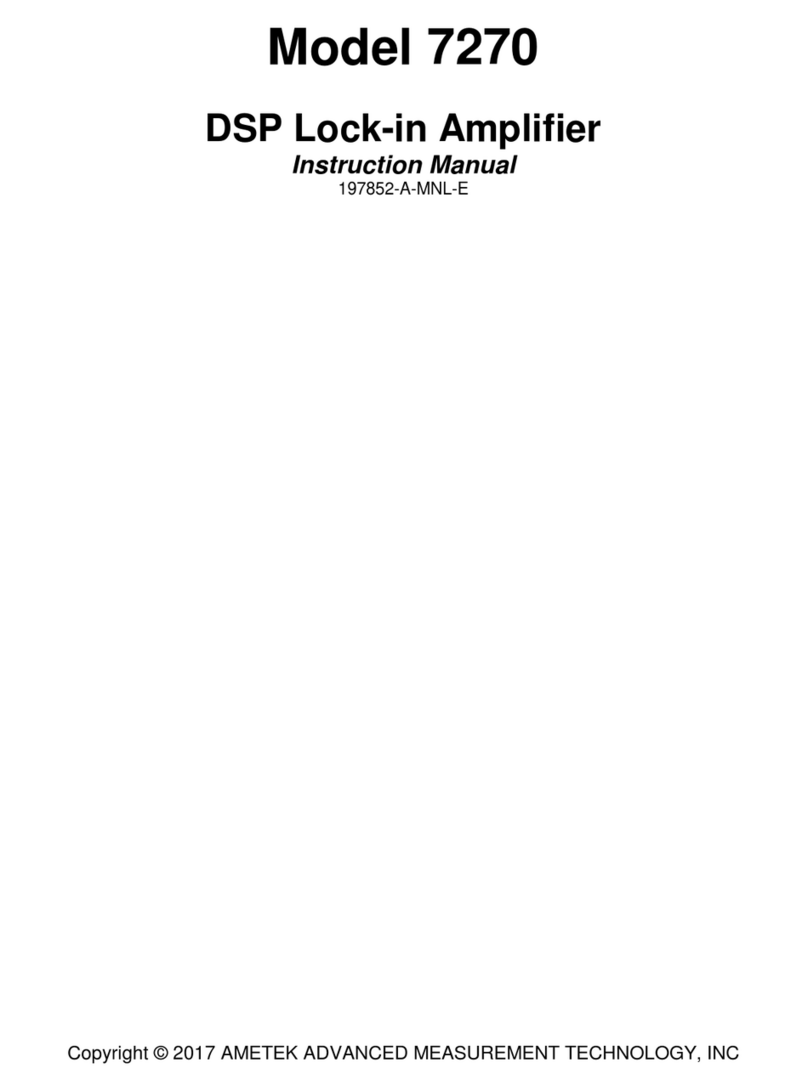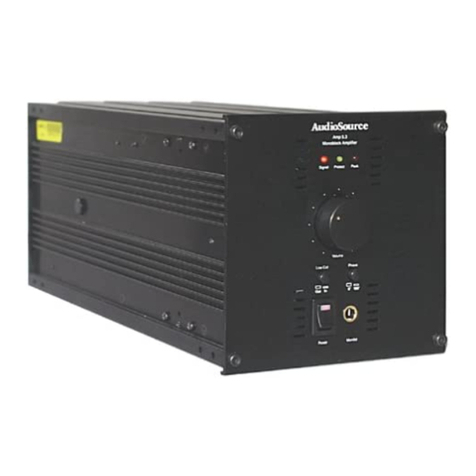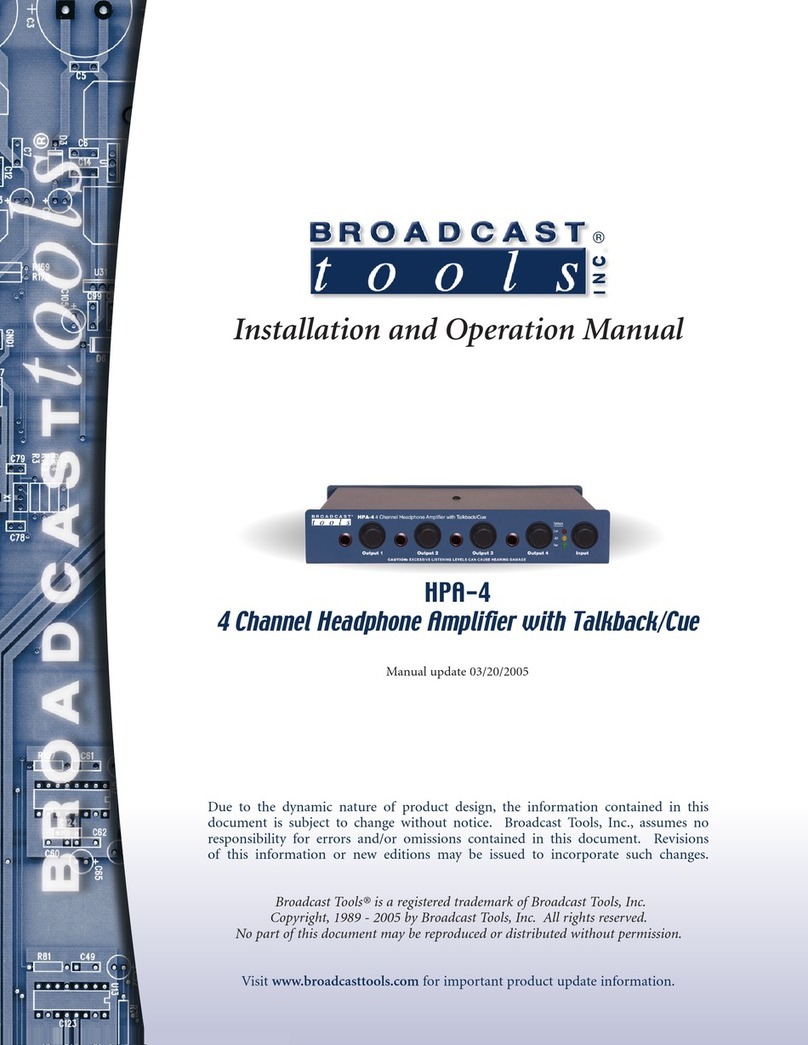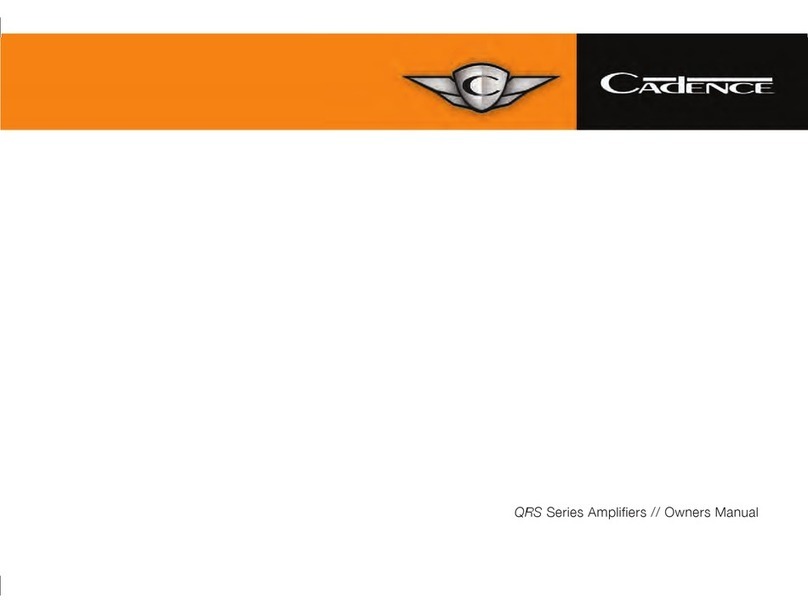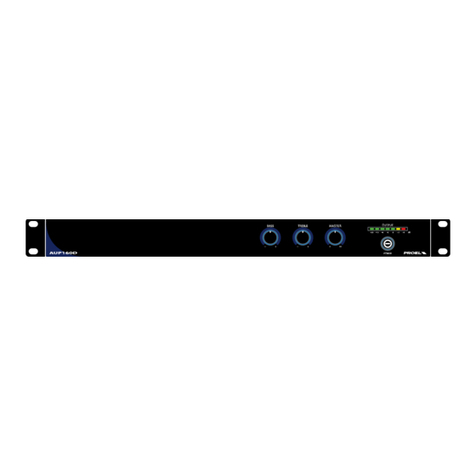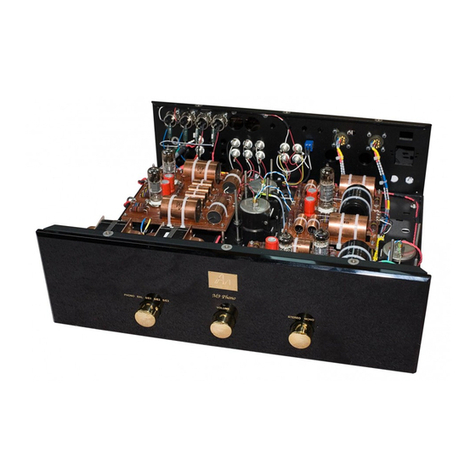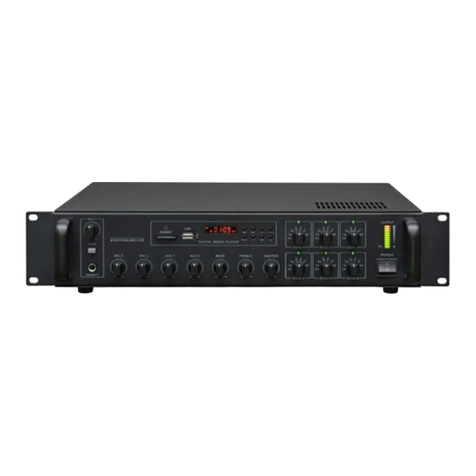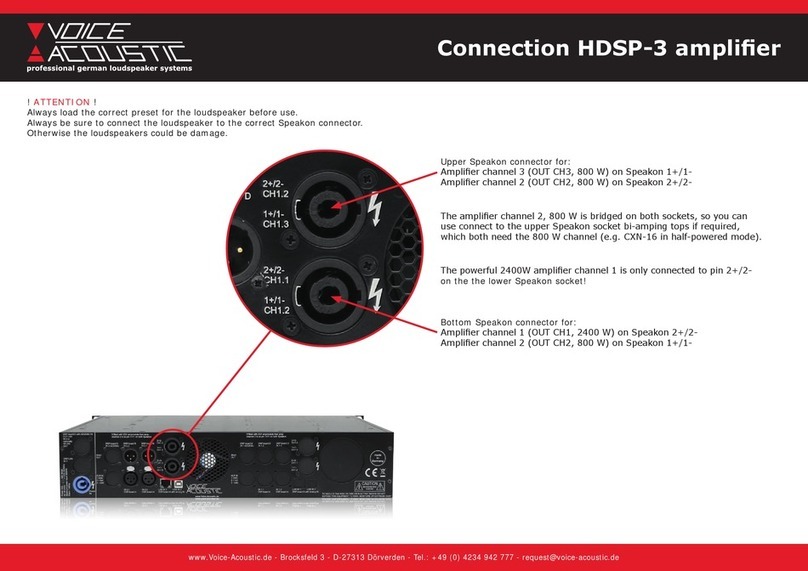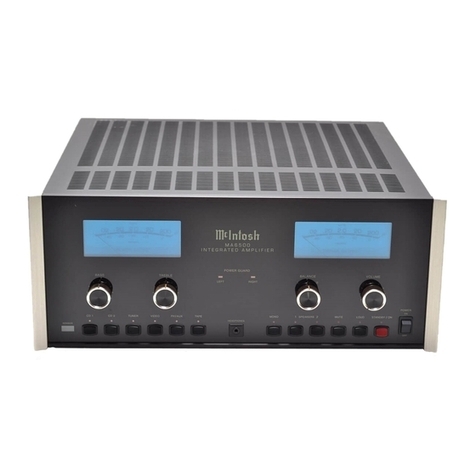Beare Essential User manual

!
!
Serial Number
Timber
Speaker
Other
User Manual
Rev v2.1 © 2023 Beare Music

Thank you for purchasing a Beare Essential!
The Essential is a moderately-powered, dual 6V6, all-tube guitar amplifier with versatile tone-
shaping options in a highly portable format.
Each amplifier features:
•hand-wired circuitry
•optimum components
•finger-jointed, solid timber cabinetry
•baltic birch ba!e
Each amp is built personally by myself with the utmost care and attention to detail. If you have a
problem with anything regarding this amp - I want to know about it!
Enjoy your new amp,
Kym Beare
Page of2 8

Front Panel!
Input Jack
Plug your guitar in here. I like to set the guitar's volume control a little below maximum (eg 8.5 on
a Strat). I like the slightly rounded tone and the Essential is voiced to compensate for the loss in
highs. Plus it allows you to to either + or - your volume / drive from your guitar to some extent.
Volume Control
The Essential is not intended to be a "high-gain" amp but rather a platform for pedals to create
the desired drive tones. The volume control will remain clean until approximately "5" and beyond
that will cause a gradual increase in distortion to a medium level drive. To achieve higher amounts
of distortion from the amp use a clean or treble boost.
Reverb Control
Adjusts the level of the Reverb return.
Power Switch
Down is active. Allow the tubes to warm up (10-15 seconds) before playing.
You may experience a "pop" when switching o#. This is normal and won't cause any damage.
Indicator Light
Tells you when the amp is on :)
Page of3 8
Input
Jack
Volume
Control
Power
Switch
Indicator
Light
Tone
Controls
Voice
Switch
Presence
Switch
Reverb
Control

Front Panel Continued...
Tone Controls
The Essential produces an extremely well-balanced frequency response with exceptional clarity.
Play the amp with the controls noon for a period of time to allow your ears to adjust to the
Essential's increased clarity. Its also worth experimenting with rolling your guitar's volume control
back a fraction to vary the amount of top-end.
The Essential has been designed to sound great with the tone controls set at noon or "0" on the
control panel.
As you increase the volume control and the amp begins to distort there is a corresponding
increase in bass frequencies due to the nature of tube distortion. You may wish to decrease the
bass control to counteract this e#ect.
Voicing Switch
The voicing switch allows you select between American (Up) and British (Down) high-mid
frequency characteristics. In American mode you may wish to reduce the Bass control slightly.
Presence Switch
With the Presence switch engaged (down) the response is similar to JCM-style amps. Disengage
the circuit (up) to achieve a response similar to American "Black Panel" amps.
The Voicing switch and Presence control allow many di#ering guitars and pedals to be catered for.
For example: Humbuckers can benefit from the increase in high-end from the Presence control.
Recommendations
Generally speaking I recommend selecting the American Voice and Presence o#for clean, beautiful
single-coil tones. British Voicing with Presence engaged is perfect for thick, crunchy Hard Rock
tones.
However, feel free to experiment and use the combinations that sound good to you!
Page of4 8

Rear Panel
!
!
!
Fuse
Use only a 1 Amp 250V Slo-Blow fuse. 3AG sized.
Power Input
Required power is 240 Volts AC 50Hz with an IEC C13 plug connecting to this socket.
For your safety, ensure your cable has a functioning ground / earth.
Impedance Selector
Ensure the correct impedance is selected to match the speaker(s) being used. If using multiple
speakers see "Using 2 Speaker Cabinets" below. Ensure the amplifier is OFF before changing the
impedance selection.
Speaker Outputs
The MAIN SPEAKER output must be used at all times. If adding an extension cabinet connect it to
the EXT SPEAKER output. The EXT SPEAKER output is wired in parallel with the MAIN SPEAKER
output.
Page of5 8
Power Input
Fuse
Speaker Outputs
Warning label
Reverb Send
Bias Probes
Reverb Cables
Impedance Selector

Rear Panel Continued...
Warnings!
1) There are no user serviceable parts inside the chassis. There is, however, voltages that can be
fatal - even when the amp is o#and disconnected from mains power!
2) A speaker(s) must be connected before applying power to the Essential otherwise serious
damage can occur.
3) Do not exposure the amplifier to moisture or liquids.
4) See "Biasing Procedure" below before setting the bias.
5) Tubes get very hot. Do not touch during or for some time after operating the amplifier. Allow
substantial ventilation around the rear of the amplifier.
Bias Probes
Insert the probes of your mulitmeter here ensuring probe colour matches the jack colour. See
"Biasing Procedure" below.
Reverb Send
The Reverb Send controls the amount of signal being sent to the reverb tank. Begin with the
control on 10. As the overall volume of the amplifier increases so does the level of the signal being
sent to the reverb tank. This may result in distortion of the reverb e#ect. To avoid distortion
reduce the Reverb Send.
Reverb Cables
The cables send (white) and return (red) the signal to the reverb tank in bottom of the cabinet.
Ensure cable colours match those of the jacks.
Page of6 8

Time to Replace Tubes?
When to replace the tubes depends on how much use the amp gets. Preamp and rectifier tubes
should last 3-5 years. Output tubes may need replacing every year with heavy use.
Important! Always replace tubes with the same type as indicated.
Ensure tubes are cool before touching.
Rectifer
-closest large tube to the black power transformer
-5U4GB
Output
-the other two large tubes
-6V6
-I recommend using 14 watt 6V6 tubes such as JJ 6V6S, TAD 6V6GT-STR, EH 6V6GT and Genelex
6V6GT as the Essential is designed to make use of the extra wattage. 12 watt 6V6 tubes such as
the Tung Sol 6V6GT may be overwhelmed and/or experience shorter lifespans.
Preamp / Phase Inverter
-the two small tubes other than the reverb tube
-ECC83S (AKA 12AX7)
Reverb
-small tube closest to the reverb cables
-12DW7
Caution! The tubes must be correctly oriented. The large tubes have a "key" that mates to a notch
in the tube socket. The smaller tubes have a space in the pins. Ensure this corresponds to the
spacing of the tube socket. Be careful not to bend the pins.
Page of7 8

Biasing
Your Essential is configured in Fixed-Bias and the bias must be checked / adjusted when changing
output tubes. If you are unfamiliar with this procedure please consult a qualified amp technician.
Biasing Procedure
1) Ensure the amplifier is connected to the speaker before applying power.
2) Connect your multimeter - black probe to black test point and red probe to the red test point.
3) Turn your multimeter to the Volts setting, millivolts if available.
4) Apply power and allow tubes to warm-up.
5) Using a flat head screwdriver adjust the bias pot (underneath chassis) until the meter reads the
desired setting.
Settings between 42 and 48mV (0.042 to 0.048V) are appropriate with the factory setting being
45mV.
Important! Do not exceed this range as it can lead to tube failure or failure within the amplifier.
Using 2 Speaker Cabinets
While one speaker is certainly su$cient to get the most out of your Essential there are times when
you may wish to add a second speaker cabinet.
Key concepts:
-Both cabinets must be the SAME impedance, eg 8 ohms.
-Combining impedances in parallel results in an overall impedance of HALF the original
impedances.
-Ensure the correct impedance is selected on the IMPEDANCE SWITCH.
Example 1: 8 ohm cab + 8 ohm cab in parallel = 4 ohm overall impedance. Therefore select the 4
ohm setting on the Impedance switch.
Example 2: 16 ohm cab + 16 ohm cab = 8 ohm overall impedance. Therefore select the 8 ohm
setting on the Impedance switch.
Page of8 8
This manual suits for next models
1
Table of contents
